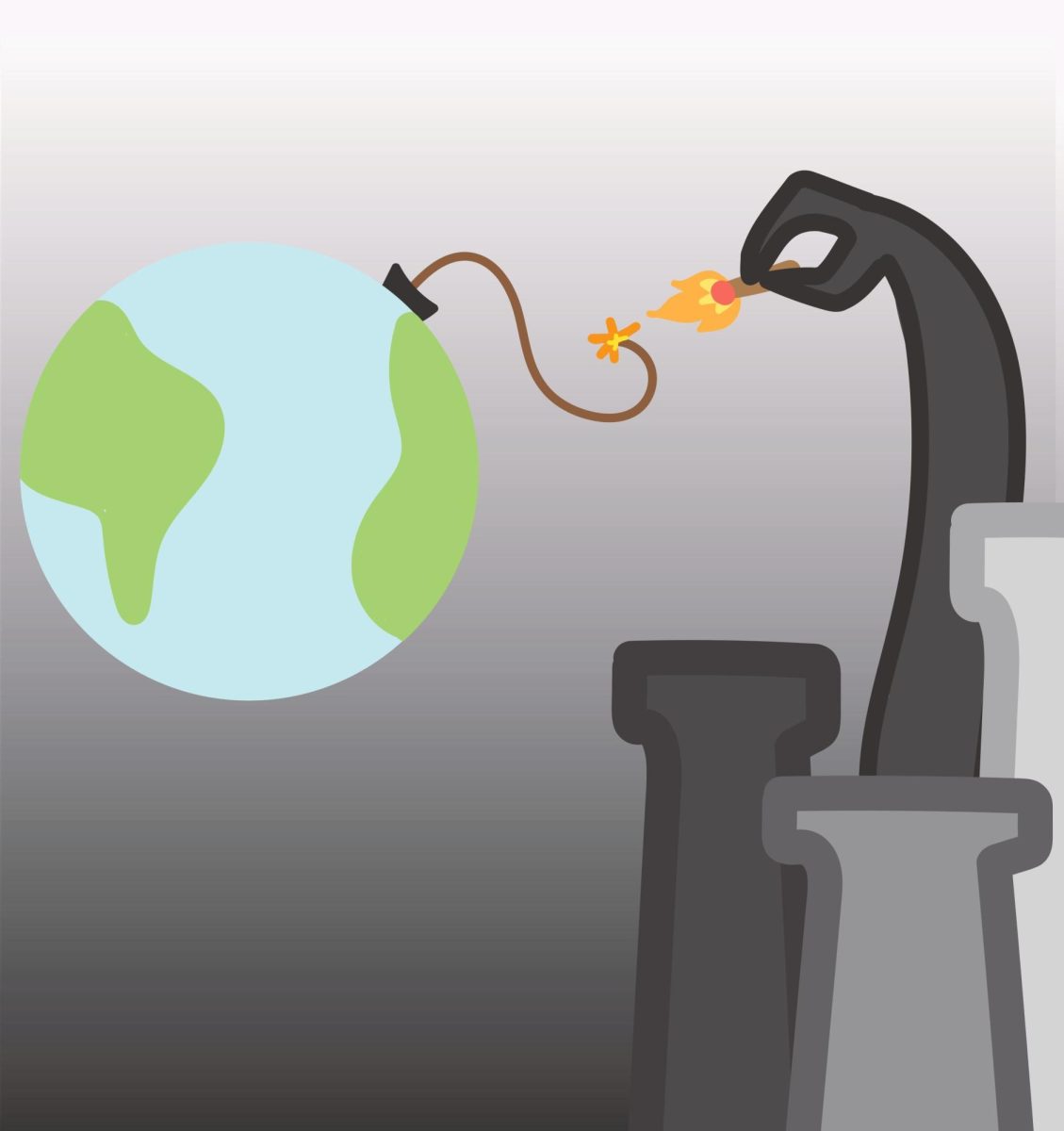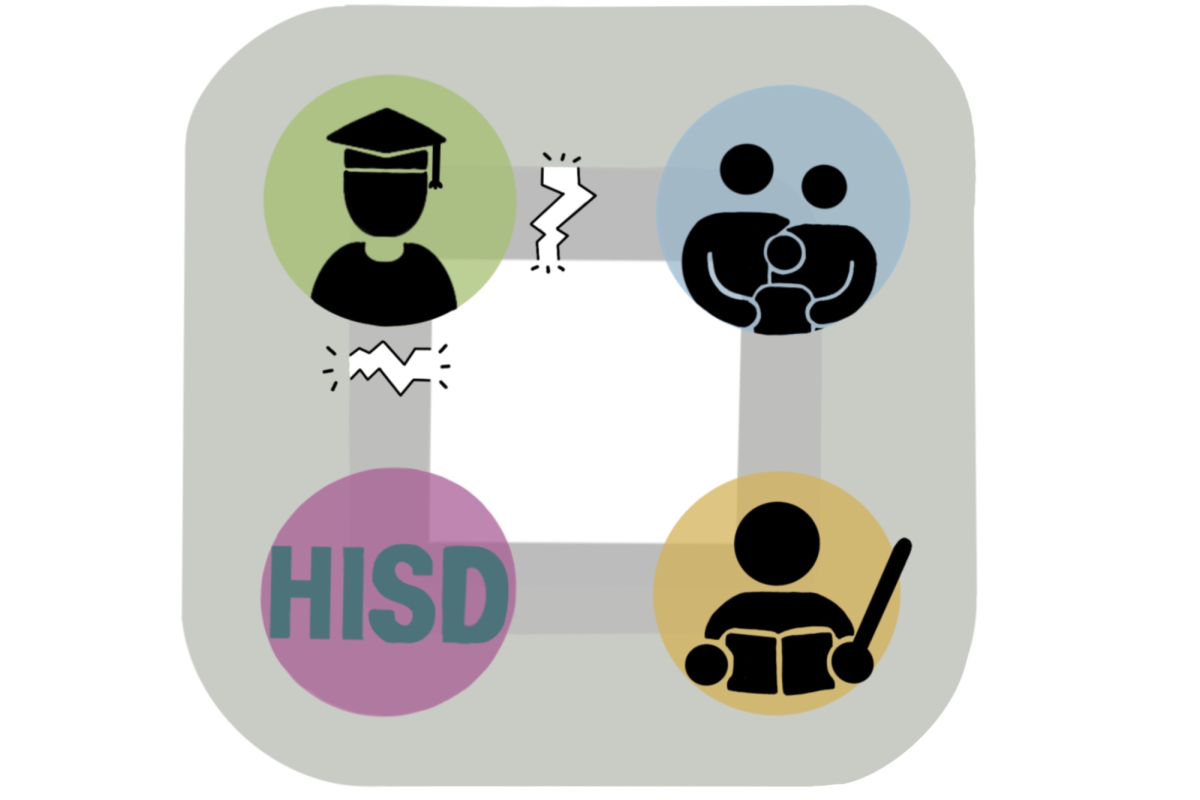Texas weather is absolutely horrible.
The humidity makes your hair frizz up, the heat is enough to cook an egg on a sidewalk and the hurricanes leave us powerless, literally.
Nevertheless, moving into 2025, I had a sliver of hope. Maybe by some miracle, we’d have better weather. Maybe I wouldn’t be boiled alive this year, have my house swept away by another hurricane or see Texas freeze over.
Yeah, no.
Not even a month into 2025, an arctic blast sent half of the nation into a frenzy. Puffers and thermal wear suddenly became the norm, and Texans faced unprecedented blizzard warnings as winter storms brought historic snowfall. On the flip side, Californians are burning up as wildfires run rampant and officials are scrambling to put out the flames.
Why is this happening? Climate change.
Closing out 2024, Earth’s average temperature rose to more than 1.5 °C above pre-industrial levels for the first time.
As temperatures continue to rise, the polar vortex, a stream of cold air circling the Arctic, is weakened. This means the polar vortex is unable to contain colder temperatures, and cold weather spills southward into regions not accustomed to the cold, like Texas.
This isn’t new.
Since the early 1980s, the polar vortex has been weakened, but due to climate change, it’s now being weakened twice as fast. What Texas experienced during the 2021 freeze or this year’s cold front won’t be the last. If anything, it’s only a sneak peek of what’s to come.
Nevertheless, my friends and I cheered as snowfall pushed back our AP U.S. History and Biology exams. While the snow was a godsend for students looking to avoid school, it had devastating consequences for others.
Houston saw 88 motor vehicle crashes overnight resulting from icy roads as officials urged residents to stay inside. Across Texas and Louisiana, over 80,000 people lost power, and there were at least seven deaths.
While these are only statistics across select states, the impacts of climate change extend far beyond the Deep South.
Disasters fueled by climate change are on the rise, displacing millions of Americans. Across the U.S., 3.2 million people are already classified as “climate migrants,” leaving primarily because of flooding and heat.
On the other hand, those choosing to stay now face not only droughts, fires, blizzards and hurricanes, but a tsunami of rising insurance rates.
Homeowners insurance increased 11% nationwide in 2023 because of increasing costs to build homes in natural disaster-prone areas and higher insurance payouts. Insurance companies are paying more and more, and these costs trickle down to the average American. Insurers have raised premiums and deductibles faster than the rise of inflation and reduced coverage in order to maintain profit margins, so much so that the number of Americans without home insurance is up 7% since 2019.
The average American now often has only three choices: coverage for sky-high rates, poor coverage or no coverage at all.
At a time when millions of Americans are already struggling to afford housing, this climate change-induced insurance debacle only worsens America’s housing crisis.
Americans face poverty and homelessness because climate change has robbed them of their homes or trapped them in a vicious cycle of poverty with astronomical costs of living.
At that point, how is climate change not real?
How can elected officials, who swore to protect their constituents, facilitate the very same disasters striking them down?
Climate change is already upon us, and we cannot sit idly on the sidelines.
As long as natural disasters continue to happen, it’s impossible for insurers to have low premiums while maintaining quality coverage. Reducing emissions is the first step to lowering costs for consumers in the long term by mitigating or avoiding the repercussions of climate change as a whole.
To start, the U.S. should halt its withdrawal from the Paris Climate Accords.
Although the agreement itself hasn’t directly decreased emissions in time to avoid crossing the 1.5 °C threshold, it’s crucial to global cooperation and fosters innovation in green technologies, which is necessary to combat climate change in the long term.
Withdrawing from the Paris Climate Accords only hampers global efforts to decrease emissions by pulling funding from the Green Climate Fund and leaves developing nations defenseless against climate change.
You might not care about others halfway across the world, but if that’s the case, then don’t be surprised when climate refugees turn up at our doorstep because we left them out to dry.
Even if the agreement imposes “unfair burdens on the American economy,” if climate change is projected to decrease the U.S. GDP by 4% and cost over $90 billion in 2023 alone, then fighting climate change is the sensible thing to do to maintain the economy.
Besides international agreements, the U.S. must bolster its domestic policies as well.
Specifically, Congress should overturn or repeal Executive Order 14037, better known as the “Unleashing American Energy” Executive Order.
The policy urges the Council on Environmental Quality to propose rescinding its National Environmental Policy Act regulations, which, if successful, means federal agencies are no longer required to assess the environmental impacts of their actions. For example, if the federal government wanted to build a new highway, they wouldn’t have to think twice about the emissions or pollution it would create before they started building, making government accountability incredibly difficult.
Moreover, the order also weakens clean vehicle initiatives by effectively freezing funds and tax credits under the Inflation Reduction Act.
The IRA shifted Americans away from gas cars and towards electric vehicles by supporting the clean vehicle sector, but EO 14037 pulled the rug out from under them. By freezing funds, Americans no longer receive a financial incentive from the government to switch to clean energy, keeping the nation dependent on fossil fuels. To push out clean alternatives risks both climate initiatives and the livelihoods of everyday Americans.
According to the U.S. Energy Information Administration, fuel consumption for transportation accounted for 31% of total U.S. emissions in 2023. Transportation emissions release dangerous levels of toxic chemicals, increasing risks of illnesses such as respiratory and cardiovascular diseases and cancer.
Americans shouldn’t have to pay for the ignorance of politicians.
Party agendas shouldn’t be prioritized when lives are at risk.
It’s impossible to get results overnight, but that’s why the U.S. must remain committed to its climate goals. It’s like treating an addiction – it’s hard at first, and there will be withdrawal symptoms, but if we don’t start now, we’ll never be sober.











Ishani • Feb 8, 2025 at 10:13 pm
Well done Catherine!! Yet another great story 🙂
Clementine Behelfer • Feb 5, 2025 at 11:32 am
This was such an enlightening read, good job!
Feifan Liu • Feb 5, 2025 at 8:08 am
Wow! I really like the last line and your reference to drinking. I also appreciated learning about the polar vortex, because I was not aware of that! This is a great article!
Alia Hassan • Feb 5, 2025 at 6:08 am
Great story cath!